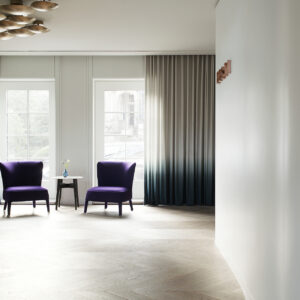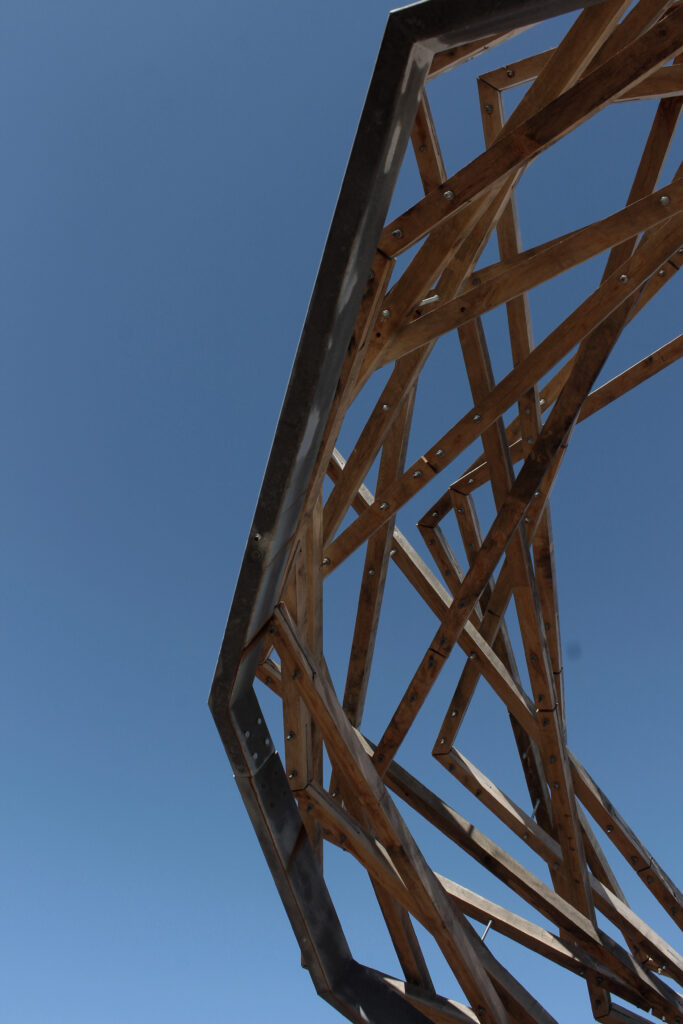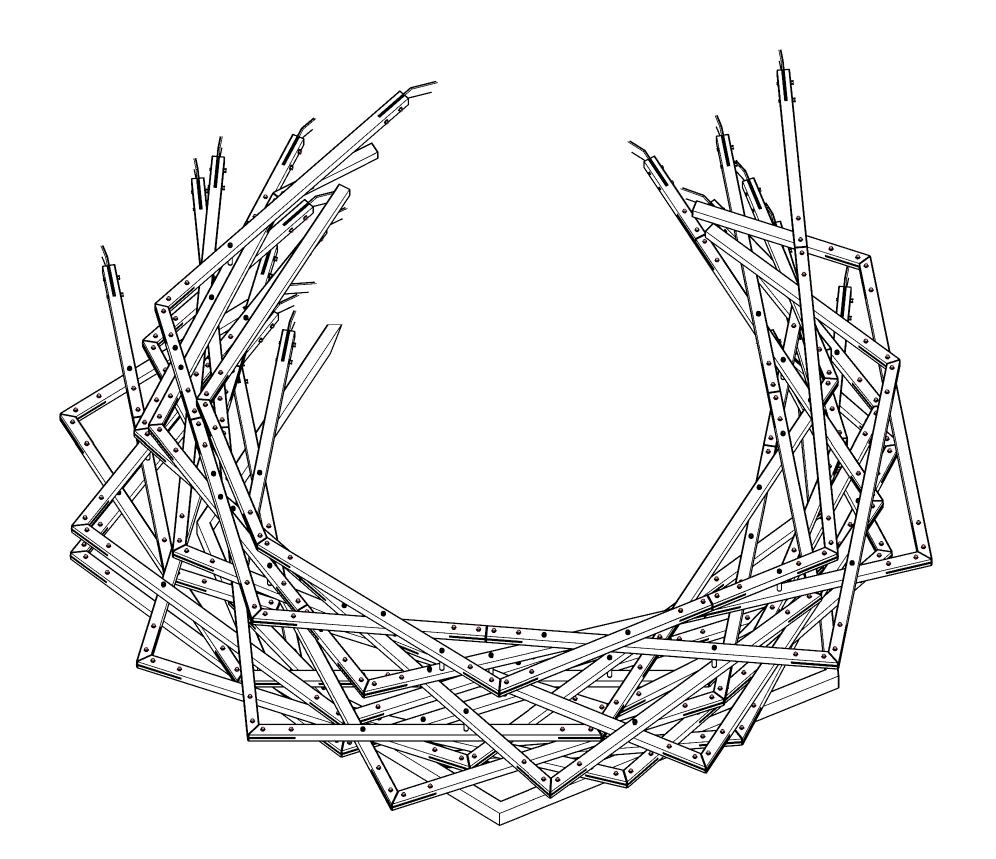The nest is a study project created and constructed by the first-year students of interior architecture of the Estonian Academy of Arts during their summer construction practise in 2020. The old cemetery on Vilsandi Island had faded into oblivion and the locals wished that they could once again – after several decades – bury their loved ones on the island.
In their course “Small Structures”, students decided to build a dignified burial place on Vilsandi that would relate to the island’s history and environment. The project provides spatial value for conducting burial services with minimum intervention in the space of local traditions and adding something to refresh the situation in the form of a dialogue.
The nest is meant as a landmark and milestone for the new columbarium. Its form stems from the long history of Vilsandi as a bird sanctuary, however, people walking to the future burial ground curving out of the ground can certainly find also other explanations. The nest can function as a portal – a gateway and transition from one world to another, crossing the border to the other side.
Seen from a distance, the landmark certainly stands out, while its form and material allow it to blend seamlessly into the surrounding nature.
The construction mainly relies on the oak timber from Lääne county that is inherently linked to the natural diversity, forests and rusticity of Saaremaa. The nest is meant to provide people with support and sense of security that their loved ones are buried in a safe place – a nesting site, a place at home.


















































































































































































































